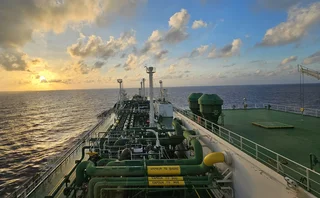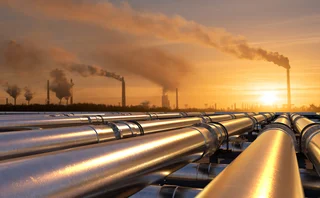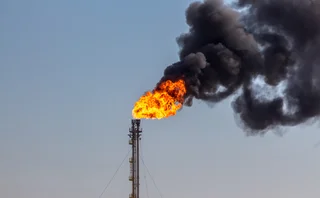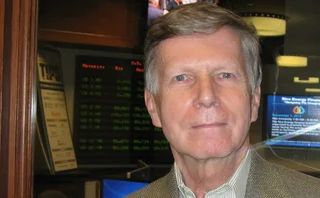Derivatives House of the Year, Asia – Deutsche Bank
Derivatives House of the Year, Asia – Deutsche Bank

Deutsche Bank wins Energy Risk's Derivatives House of the Year, Asia after proving the ability to grow its derivative product base, innovate new trading systems and greatly expand during a time of major change.
"We respond to the changing needs of our clients," says Gunnar Hoest, managing director and head of commodities for Asia at Deutsche Bank. "Before the credit crunch, consumers were demanding flow hedging in particular. However, since 2009, inventory financing is high on clients' agendas as they have become less worried about prices roofing in the near term and are more worried about their funding needs and how to manage inventories."
Deutsche Bank tackled the changing frontier for Asian energy and commodities derivatives by firstly expanding the team with key hires such as Hoest, Stuart Smith, head of corporate commodity sales for Asia, and David Silbert, global head of commodities. The bank, which has over 35 people in the energy and commodities derivatives team in Asia, expanded teams across the whole region and integrated members from all other asset classes to create specialist teams.
"The real lure of our commodity derivatives offering in Asia is the strength of the locally based teams across the whole of the region," says Silbert. "From Beijing to Singapore, Vietnam to Australia, our business allows us to access more customers, more markets and more liquidity than some of our competitors."
Smith adds: "Our head count accounts for a huge proportion of success with our clients. We integrate multi-disciplinary teams to create structured solutions for our clients. We take people from credit, foreign exchange, equity and pull them together to design and structure solutions for our commodities clients."
With specialist teams in place, Deutsche Bank has shown a range of significant achievements over this awards period. In 2009, the investment bank installed the capability to do physical transactions in some of Asia's most sought-after commodities, which means it is able to develop structured financing solutions involving physical commodities to assist clients' financing requirements.
"One of our key focuses is to stay ahead of the curve," says Hoest. "This means we look to anticipate what happens in the market in the future and structure new products that will fit into this scenario. We have already demonstrated this by our instrumental presence in new markets like iron ore, minor metals and coal."
Following this, Deutsche Bank saw a fourfold increase in business over the past six months.
"Given the growth in Asia, this requires a lot of product innovation," says Silbert. "There are new commodity products being developed in Asia as clients have been demanding more solutions. It is where the action is happening."
But 2009 wasn't just a breakout year for Deutsche Bank's derivatives product offerings, as the group managed to buoy up its commodity flow trading capabilities by constructing new online trading platforms. Last year it launched its liquid carbon platform, which allows clients to sell Certified Emissions Reductions (CERs) credits electronically in Asia. The new platform, which is a build out of its Autobahn model, has translated into a 14% year-on-year increase in its client base across all products.
Moving forward, Deutsche Bank is still looking to make the next couple of years just as significant as 2009.
"Coal, iron ore and freight all have similar clients, similar product offerings and similar risk," says Silbert. "We are looking to align these businesses into one unit and calling it a bulk trading business."
The bank is also looking to expand its e-trading capabilities by possibly putting on some selected energy products on the Autobahn platform within the next six months.
Click here to see the article in PDF format.
More on Risk management
LNG trading strategies set to change amid major market shifts
The global LNG market is on the brink of significant changes set to alter trading dynamics and market behaviour, say analysts
Why commodity finance is ripe for stablecoin
Digital currency brings cost efficiencies to financing, but its real benefit to commodity firms lies in making huge pools of new capital available, write Jean-Marc Bonnefous and Ronan Julien
US shutdown leaves commodity traders without key data
Commodity traders are ‘flying blind’ without Commitment of Traders reports
Energy Risk at 30: Learning from the past
Energy Risk looks back at the seminal events and developments that have shaped today’s energy markets
Past disasters can prove the value of energy risk management
Analysing failures and losses at energy firms can underscore the value of consistent, high-quality risk management
How quants shaped the modern energy markets
The business models of today’s utility firms are built on quantitative analysis, but the introduction of these techniques in the 1990s was far from smooth
Interview: Vince Kaminski
Market veteran Vince Kaminski discusses the biggest risks to energy firms today and whether risk teams can ever prove their value
Mounting risk prompts refocus on integrated energy risk management
Energy firms are facing heightened risk due to shifting geopolitics, climate change and the energy transition. As market, credit and enterprise risks ramp up, the need for improved integrated risk management is growing, say risk managers







